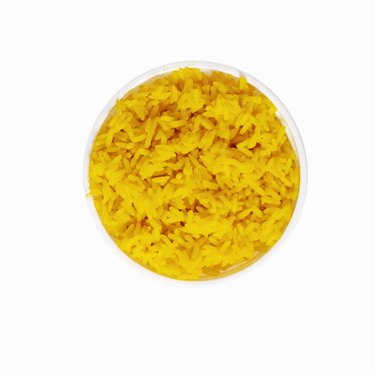
Saffron is one of the most expensive spices in the world, since it takes thousands of flowers to produce a pound of the stigmas. That's right, saffron is actually the stigmas of a flower -- a fall-blooming crocus flower, to be exact. Recommended for U.S. Department of Agriculture plant hardiness zones 6 to 9, this crocus should do especially well in the western plains section of South Texas, since it likes dry summers. Although saffron (Crocus sativus) is a popular flavoring in some cultures for a wide variety of dishes, it has a slightly bitter flavor and isn't everybody's cup of you-know-what.
Site
Video of the Day
Saffron crocus grows best in a light sandy loam that has been amended with composted manure. If you live in the more humid gulf coast area of South Texas, be especially careful to give the bulbs a well-drained position, such as on a gravelly slope. The bulbs will bloom well in either sun or partial shade.
Video of the Day
Planting
You'll want to acquire as many saffron crocus bulbs as possible, since it can take the stigmas of about a dozen to provide enough spice for just one recipe. For the best results, plant the bulbs in late August, positioning them 6 inches apart and 2 to 4 inches deep. Depending on how dry the fall is, you may need to water the soil about once a week to encourage those bulbs to sprout. You should never allow their bed to become soggy, however, as this plant is prone to root rot.
Harvesting
The buds of saffron crocus often appear before the leaves, and will probably begin blooming in October, about 40 days after their planting. Once those lavender flowers begin to open, harvest the spice early in the morning before any pollinators get to it. You can use tweezers to pluck the three reddish-orange 1-inch-long stigmas from each flower and drop them into a paper envelope. Those "threads" can then be dried for three hours in a dehydrator set to about 120 degrees Fahrenheit or spread between paper towels in an airy room until they are brittle. Once dry, they should be stored in a tightly capped spice bottle in a dim, cool location to preserve their freshness. Keep them out of the reach of children, since too much saffron can be toxic.
Upkeep
The grassy saffron crocus leaves can grow 6 inches to 1 foot high and should persist until spring unless the winter is especially harsh. Then they will die down over the hot summer, to pop up again when cooler weather returns in the fall. Each bulb only blooms once but produces multiple bulblets to take its place, so you should dig and divide your crocuses sometime during the summer about every three years or so.
- Herbs for Texas; Howard Garrett
- Dallas News: Autumn Crocuses Offer Hues of Springtime
- Your Backyard Herb Garden; Miranda Smith
- The Herb Society of America's Essential Guide to Growing and Cooking with Herbs; Katherine K. Schlosser
- Washington State University: Grow Your Own Saffron
- Boobook Hill Saffron: Growing Saffron -- the World’s Most Expensive Spice
- Field Guide to the Broad-leaved Herbaceous Plants of South Texas; J. H. Everitt, Dale Lynn Drawe and Robert I. Lonard